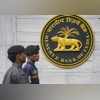The Reserve Bank of India (RBI) has directed banks to take necessary steps to urgently reduce the number of inoperative or frozen accounts and make the activation process for such accounts smoother and hassle-free. This includes enabling seamless Know Your Customer (KYC) updates through mobile or internet banking, non-home branches, video customer identification processes, and more.
For accounts of beneficiaries of various central or state government schemes, the RBI has instructed banks to adopt an "empathetic view," as many such accounts have been frozen due to factors like pending or periodic KYC updates.
Additionally, the RBI has directed banks to organise special campaigns to facilitate the activation of inoperative or frozen accounts and support customers with Aadhaar updates through branches offering Aadhaar-related services.
“Instructions have been issued separately to state-level bankers' committees (SLBCs) to proactively monitor the situation in their respective jurisdictions with a view to minimising customer inconvenience,” the RBI said.
In a notification issued on Monday, the RBI noted that following an analysis conducted by its department of supervision, it found that the number of inoperative accounts or unclaimed deposits in several banks was high, both in relative terms to their total deposits and in absolute terms. This was attributed to either prolonged inactivity or pending KYC updates in such accounts.
Also Read
“Reportedly, there were instances of customers facing inconvenience when they approached bank branches to activate inoperative accounts, including inadvertent errors in customer details such as mismatches in names,” the RBI said. It added that some banks have a significant backlog of accounts due for KYC updates, resulting in accounts being frozen for further transactions under banks' internal policies.
The RBI has further directed that progress in reducing inoperative or frozen accounts and the special efforts made by banks should be monitored by the Customer Service Committee (CSC) of the banks’ boards.
Moreover, banks are required to report their progress on reducing inoperative accounts on a quarterly basis to their respective senior supervisory managers (SSMs) through the DAKSH portal, starting from the quarter ending December 31, 2024.

)
